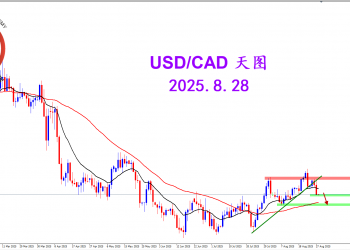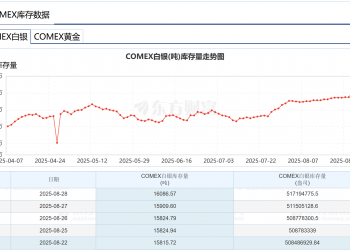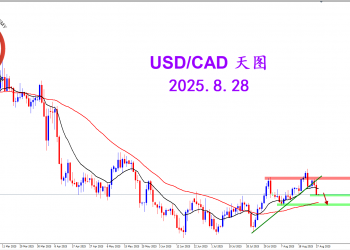WSJ 北京时间2006年04月08日07:37
美元周五大幅走高,此前公布的强劲的就业报告使周四欧洲央行(European Central Bank)行长发表偏宽松讲话后出现的美元看涨势头更加明显。
欧元自周四尾盘以来已回吐1%以上的涨幅,而美元则继续从年内低点处反弹。欧元盘中一度跌至1.2090美元,并在纽约汇市结束前的一段时间里被限制在1.21美元下方。纽约汇市尾盘,欧元兑1.2095美元,较周四尾盘的1.2229美元大幅下跌;
欧洲央行行长特里谢(Jean-Claude Trichet)周四在央行决定维持2.50%利率不变后发表了偏宽松的讲话,使预期欧洲央行将在5月份加息的投资者大跌眼镜,并导致欧元下跌。
此前公布的美国就业数据显示,今年1、2月份就业数据被向下修正,这在最初阶段推动美元下跌。不过,随著投资者重新审视这份报告,并对其中可能隐含的通货膨胀信息及其对货币政策的影响加以考虑之后,美元又重拾此前的升势。
美国劳工部(Labor Department)周五称,3月份非农就业人数增加21.1万人,高于此前预期的20万人;失业率降至近5年低点4.7%。3月份每小时平均工资折合成年率增加3.4%。
JP摩根(J.P. Morgan)驻纽约的固定收益及外汇业务全球主管Anton Pil表示,导致欧元近期走低的根本原因是特里谢的讲话和美国的就业数据。
Pil称,近期影响汇率波动的中心问题是美国联邦储备委员会(Fed)将于何时停止加息的问题。鉴于Fed已经明确表示,在制定货币政策时将更加依赖于经济数据,那么出乎意料的经济报告就可能给汇市造成大的影响,例如周五的就业报告。
本周早些时候,市场曾暂时撇开Fed不顾,转而关注欧洲央行的动向,希望在欧元兑美元升至2006年新高之际驾驭美元颓势。许多人士当时曾表示,由于Fed加息周期可能结束而欧洲央行正开始加息,美元或将拉开长期下跌的帷幕。但美元周五的飙升似乎给这些投资者泼了冷水。美元兑欧元不但持续下挫,并且屡破技术阻力,勉强守住1.21美元的关键水平。
Pil表示,投资者们担心会错失美元在下半年走软的获利机会。他们担心,如果等待的时间过长,他们可能会因为来不及建立头寸而丧失机遇。
Weekly Outlook 4-7-06
Currencies went on a rollercoaster ride this past week, with the Euro surging early in the week on speculation of more aggressive ECB tightening, only to have that prospect explicitly rejected by ECB Pres. Trichet on Thursday. Subsequent Euro long liquidations and a solid NFP report on Friday saw the Euro surrender two thirds of its gains by the end of the week. Gold rallied beyond $590 to test the psychologically import level of $600 only to be rejected and close on a weekly basis below $590. If the dollar’s recovery is for real, gold is likely to fall below the current uptrend support now at $585 in another wave of speculative liquidation. Oil prices tested higher but failed to overcome technical resistance at $68.50.
Trichet’s comments caught the market by surprise and came as an explicit rejection of the market’s most recent round of speculation over the timing of the next ECB rate hike. Most analysts have now moved their forecasted rate hikes back one month to June and August from May and July. Later on Friday at an ECOFIN meeting of Eurozone finance ministers, Trichet indicated that the level of the Euro was not a factor in Thursday’s decision to hold monetary policy steady. But that does not mean that his statement at the press conference was not partially intended to put a lid on the currency’s rally. (It would not do for the head of a central bank to be seen to be manipulating the country’s currency in such a way.) From an alternate perspective, French Fin. Min. Breton said he was pleased by the Euro’s decline on Thursday, but then added that he did not object to the Euro’s current level. (Finance ministers can and frequently do seek to manipulate the value of their currency.) There is plenty of room here for speculation and reading between the lines, but the reality is that since September of 2005, each attempt of the Euro to move above 1.2300 has been firmly rejected, usually as a result of official pronouncements. I have frequently suggested that Eurozone officials are loathe to see the Euro move back above 1.25, and nipping nascent rallies in the bud at about 1.23 serves to prevent any trends from taking hold and challenging the political will of Eurozone finance ministers.
The dollar is not quite out of the woods despite its strong rebound on Friday, though it is certainly heading in the right direction. US Treasury yields moved sharply higher and 10-year yields are finishing the week at 4.98, their highest level since mid-2002. Perhaps significantly, late on Friday afternoon in an interview with Bloomberg TV, St. Louis Fed Pres. Poole (a non-voter/alternate on the 2006 FOMC) suggested that 5.25% Fed Funds is “reasonable given what we know.” Coming as late in the day on Friday as it did, markets did not have much of a chance to react, but it seems likely that his remarks will echo in the week ahead. The bulk of market analysts, including myself, have settled on a 5.00% Fed funds rate before a pause at mid-year, with a few firms having recently revised prospects higher to a 5.50% rate. This suggests there is a fair amount of recalibration on interest rate thinking that is likely to unfold next week, and it will probably be swift and allow the dollar to carry on higher. From a technical perspective, the US dollar index needs to surmount 89.75 to move higher and strength over 90.20/30 substantially improves the dollar’s multi-week prospects.
The data schedule next week holds out some potentially disruptive hurdles to the dollar’s rebound, most notably Wednesday’s release of the US trade deficit in February. Advance retail sales for March are out on Thursday, and while forecasts are for a 0.5% rise, other market reports suggest sales remained on the weak side. Later on Thursday three Fed speakers will give us additional insight into the near-term Fed outlook.
Next week sees Easter holidays at the end of the week and this should reduce overall liquidity in European trading sessions, particularly late in the week. German and Eurozone ZEW confidence surveys on Tuesday are the data highlights for the week.
4/11 0700 EC ECB's Mersch speaks
4/11 0900 Germany ZEW survey econ. sentiment Apr 63.4 65.5
4/11 0900 Germany ZEW current conditions Apr -8.4 -2.0
4/11 0900 EC ZEW Eurozone econ. sentiment survey Apr 61.1 63.0
4/11 1800 US Fed's Stern speaks on economy
4/11 2100 US ABC consumer confidence w/e 4/10 -9 n/a
4/12 0600 Germany CPI-EU harmonized MoM Mar-final 0.4% 0.1%
4/12 0600 Germany CPI EU-harmonized YoY Mar-final 2.1% 1.9%
4/12 0800 EC ECB publishes monthly report April
4/12 0900 EC Eurozone GDP QoQ 4Q-final 0.7% 0.3%
4/12 0900 EC GDP YoY 4Q-final 1.6% 1.7%
4/12 0900 EC Eurozone household consumption QoQ 4Q-final 0.5% -0.2%
4/12 1100 US MBA mortgage applications w/e 4/7 7.2% n/a
4/12 1230 US Trade balance Feb -68.5 bio -67.8 bio
4/12 1800 US Monthly federal budget statement Mar -71.2 bio -76.3 bio
4/13 1230 US Import price index MoM Mar -0.5% 0.2%
4/13 1230 US Import price index YoY Mar 7.4% n/a
4/13 1230 US Advance retail sales Mar -1.4% 0.5%
4/13 1230 US Retail sales ex-autos Mar -0.6% 0.5%
4/13 1230 US Business inventories Feb 0.4% 0.3%
4/13 1230 US Initial jobless claims w/e 4/8 299K 305K
4/13 1345 US Univ of Michigan consumer sentiment Apr-prelim 88.9 88.8
4/13 1700 US Fed's Kohn speaks on economy
4/13 1945 US Fed's Bies speaks to community leaders in SF
4/13 2130 US Fed's Olson speaks on the economy
4/14 EC Holiday advisory
4/14 1315 US Industrial production Mar 0.7% 0.5%
4/14 1315 US Capacity utilization Mar 81.2% 81.4% |
 一口气了解外汇,都是怎么玩儿的?35 人气#视频
一口气了解外汇,都是怎么玩儿的?35 人气#视频 9?13 人气#议 事 厅
9?13 人气#议 事 厅 贵金属周报(8月31日)506 人气#主 论 坛
贵金属周报(8月31日)506 人气#主 论 坛 8,291 人气#议 事 厅
8,291 人气#议 事 厅